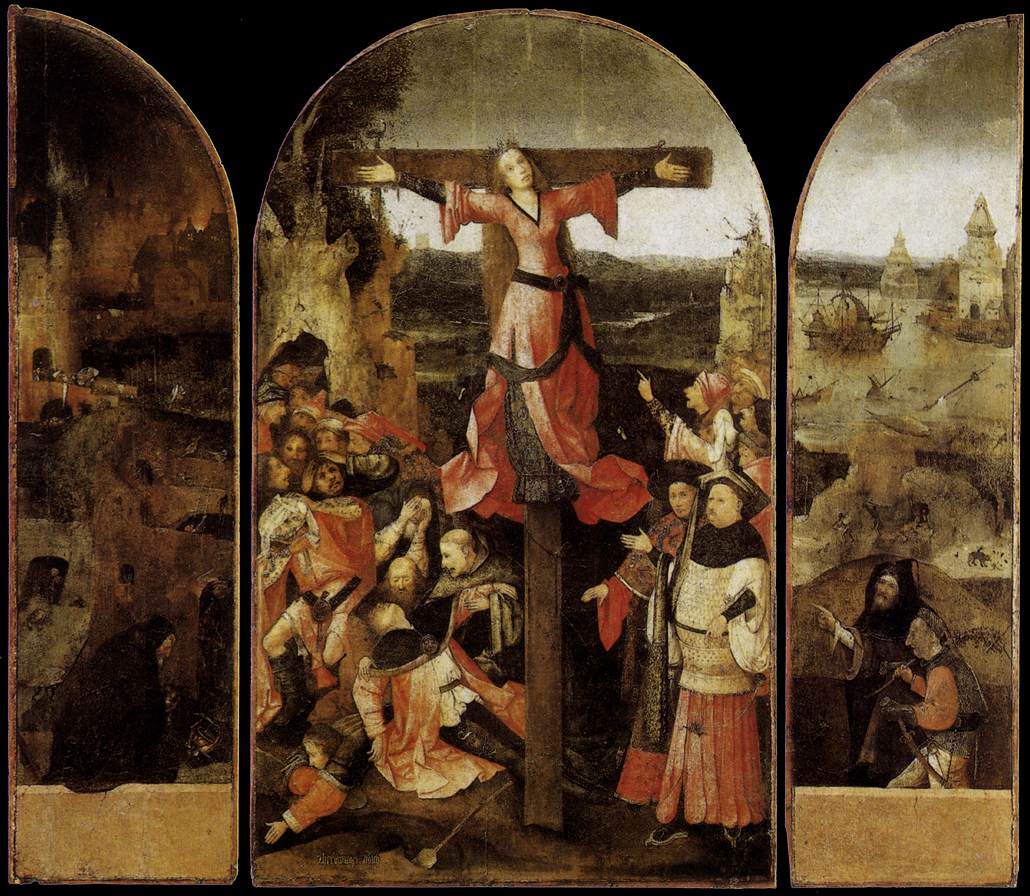Description
The Triptych of the Martyrdom of St Liberata is a masterpiece by the Dutch artist Hieronymus Bosch, created in the 15th century. This painting is a triptych, that is, a work divided into three panels that can be opened and closed like a book. The original size of the work is 104 x 119 cm.
Bosch's artistic style is unique and well recognized in art history. His works are full of symbolism and mystery, and are characterized by his boundless imagination and his ability to create fantastic and surreal scenes. In this triptych, Bosch uses his characteristic style to portray the story of the Christian martyr Liberata.
The composition of the work is very interesting. In the central panel, the moment in which Liberata is beheaded by the Romans for refusing to renounce her Christian faith is depicted. On the side panels, you can see scenes representing the executioners and the spectators who witnessed the execution. The composition is very well balanced and every detail is carefully thought out to create a sense of tension and drama.
Color is also a prominent aspect of this work. Bosch uses a bright and vivid color palette to depict the violence and suffering of the martyr. Red, yellow and green are the main colors used in the work, and are used very effectively to create a dramatic and emotional atmosphere.
The history of the painting is very interesting. It is believed to have been commissioned by the Brotherhood of Saint John in Hertogenbosch, Bosch's hometown. The work was created to be placed on the altar of the brotherhood chapel, and it is believed that it was used in religious ceremonies for many years.
Finally, there are some little-known aspects of this work that are very interesting. For example, some of the characters in the work are believed to be portraits of real people living in Bosch's time. Furthermore, the work is known to have undergone some modifications over the years, including the addition of a gilt frame in the 18th century.

